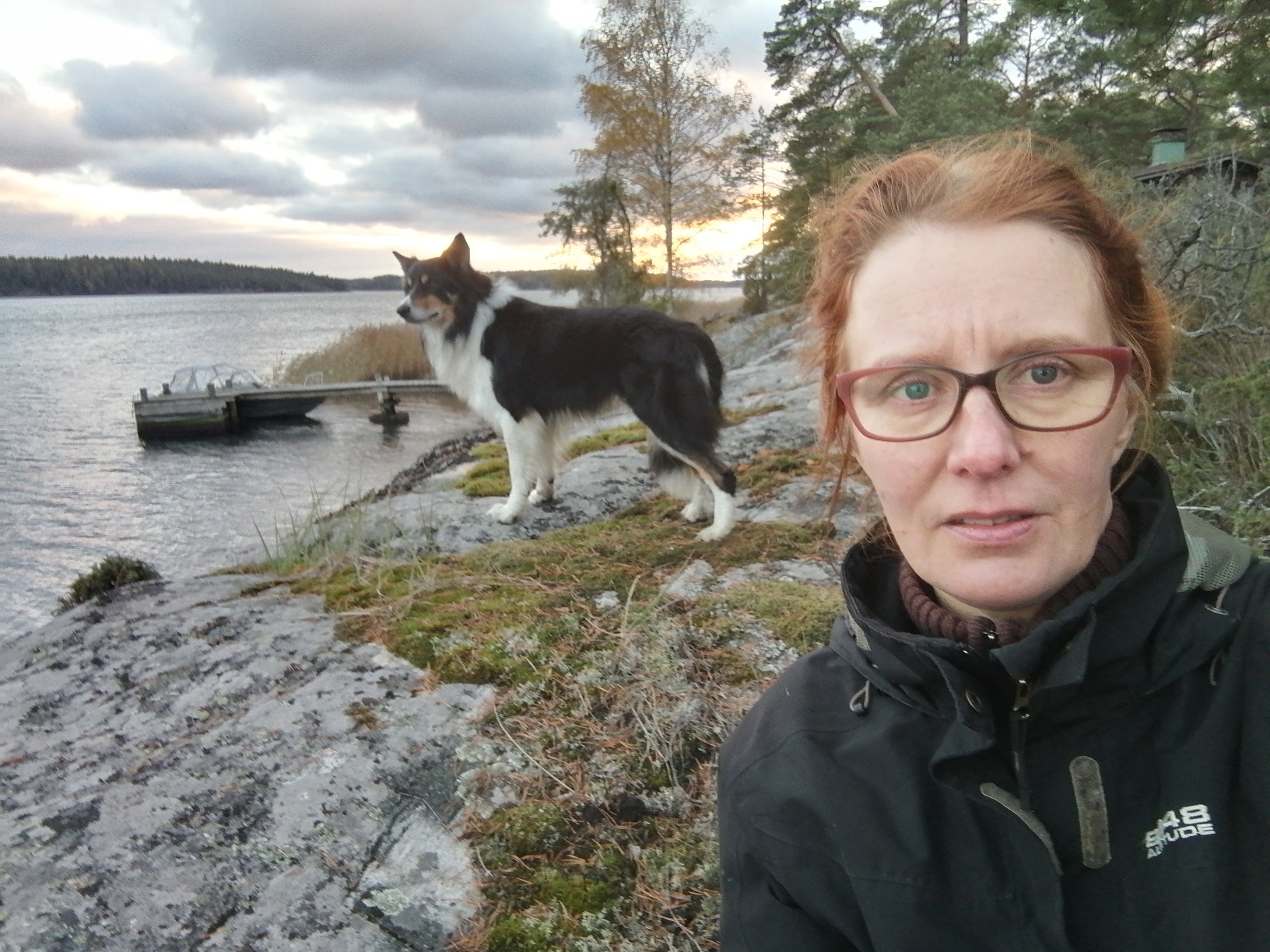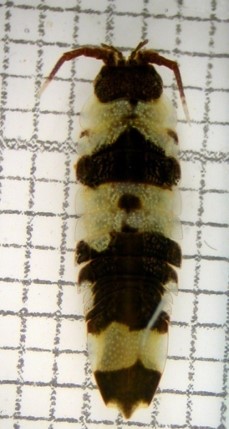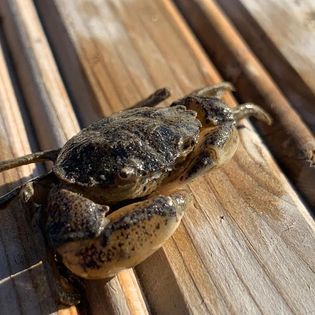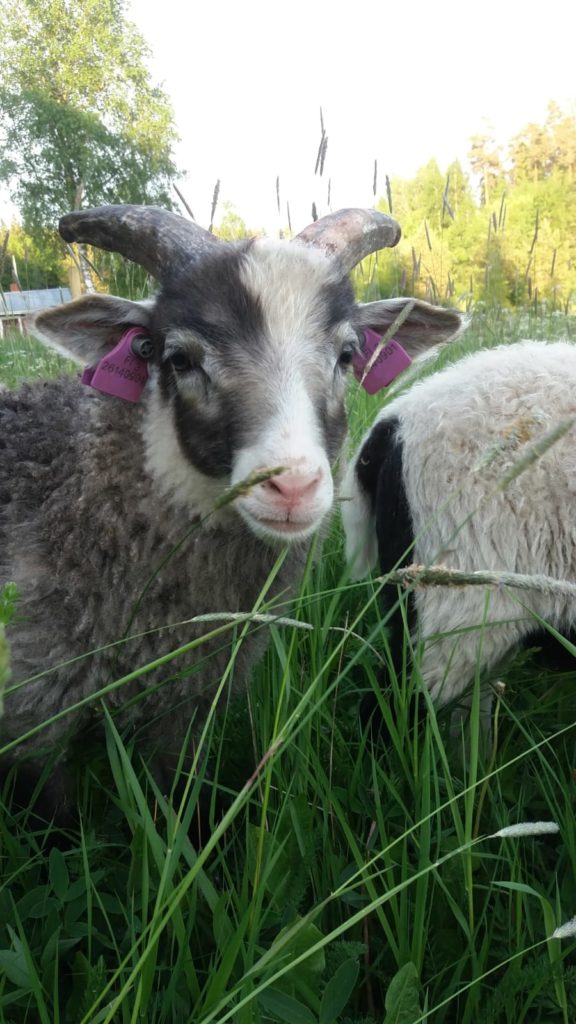Principal Investigator

Jan 2025 -> Associate Professor in Evolutionary Language Science, University of Turku, Finland.
School of Languages and Translation Studies (Finnish, Finno-Ugric and Scandinavian lgs) Earlier at the Department of Biology, UTU.
My research revolves around the study of language change over time and space, employing evolutionary and ecological approaches. I lead a team that applies research methods derived from population biology, phylogenetics, landscape ecology, geography, and computational sciences to analyze language data. My (not so) secret final aim is to contribute to the study of the human linguistic past and use that aside from other disciplines studying the human past. Historical linguistics has so much to offer for studies of human diversity!
LANGUAGE EVOLUTION
Linguistic variation exhibits a fascinating spatial dimension that intrigues me.I am driven to unravel the patterns and underlying factors shaping the current linguistic landscape. How did the Finnish language spread over the landscape, that was Saami speaking since before the Iron Age? How did the Finnish dialects evolve? How did the Finnish genetic landscape evolve – and did the formation of genetic diversity have to do with the formation of linguistic diversity? Could the formation of genetic diversity be linked to the emergence of linguistic diversity, as suggested by Hunley (2015) and the differential permeability of group boundaries for people and languages?
And what is the history of the Uralic language family? The basic questions are still under debate – where was the geographical origin of Proto-Uralic, how did it spread across different regions and what is the age of the language family? To shed light on these mysteries, I employ innovative datasets such as UraLex (lexical cognate data) and UraTyp (linguistic typological data).
Significantly, our research team has developed a cutting-edge computational framework that seamlessly transforms the information attained in historical linguistics into easily accessible databases. Moreover, we have devised metrics that facilitate cross-comparisons between linguistic history, genetic history, and archaeological records.
PURELY BIOLOGICAL RESEARCH
The title of my PhD thesis was “Local and sexual divergence in host-use traits and anti-predator adaptations in the marine herbivore Idotea balthica”. The study dealt with local adaptation and ecological speciation; I studied population divergence in phenotypical traits. This work was supervised by doctors Veijo Jormalainen, Sami Merilaita and Tuija Ramsay.

In addition to my linguistic research, I still work with the intriguing realm of evolutionary biology. This side of my work includes the evolution of personality in marine isopods Idotea balthica. My investigations center around understanding sexual differences in personality within this species. To accomplish this, I conduct studies on the same marine crustacean herbivore, Idotea balthica (Pallas), that I previously examined in my doctoral thesis. This research is conducted in collaboration with Maria Yli-Renko, Dr. Jenni Pettay, and Dr. Eva Rothäusler.

In co-operation with Tiia Forsström and Dr. Amy Fowler we initiated studies on the ecology of marine invasive species with focus on the American white fingered mud crab (Rhitropanopeus harrissii). The thesis was defended 2017 and was supervised by Prof. Veijo Jormalainen and Academy Researcher Anti Vasemägi.

Finally, to my great pleasure, my hobby expanded to a master thesis project by Iida Nikkilä: She collected baseline information about phenotypic variation in the growth factors and morphology of the Archipelago Sheep. The goal is to maintain genetic diversity in this breed while breeding it towards faster growth or better quality of the fur. Also this thesis was supervised jointly with Dr Jenni Pettay.
Happened so far
- 2025 – Associate Prof in Evolutionary Language Science, UTU
- 2022-2024 Research fellow at the Turku Institute for Advanced Studies (TIAS); Dept of Finnish language and Finno-Ugric linguistics, UTU
- 2020-2022 PI/Coordinator of interdisciplinary URKO project (sites.utu.fi/urko, Finnish Academy Funding for Dept of Biology (Päivi Onkamo), Dept of Finnish languages and Finno-Ugric linguistis (Sirkka Saarinen) and Geography and Geology (Harri Tolvanen), UTU
- 2019 (Jan-June) University Lecturer of Environmental Sciences
- 2018 Visiting researcher at the Department of Linguistics and Phylology at the Uppsala University, Sweden
- 2014-2019 PI of the BEDLAN-initiative with Kone Foundation funding (SumuraSyyni and AikaSyyni) at the Department of Biology, University of Turku
- 2013-2014 (Sep-Aug) EU adviser at MTT Agrifood research Finland (at Jokioinen)
- 2011-2013 (Jan-July, 2,5 years) University lecturer in (aquatic) ecology at Department of Biology, University of Turku
- Nov 2010→ Post doc at BEDLAN
- 2010
- a) Part time post doc at BEDLAN and
- b) Part time planner at the South-West Finland Centre for Economic Development, Transport and the Environment (former LOS) as a marine biologist in the NANNUT project
- 2009 Post roc research in a project financed by Kone Foundation: Herbivore adaptations to local selective environment: Variation in gut microbial activity, predator avoidance and behavior in Idotea balthica
- 2009 PhD finally defended
- 2007-2009 All together 9 mo at the South-West Finland Regional Environmental Centre (LOS); Preparing an EU-project called NANNUT to study the underwater biodiversity of the Baltic Sea and applying the data to environmental governance
- 2003-2009 PhD studies at the University of Turku, Department of Biology, Section of Ecology
- 2001 MSc about the effects of acidification to fluctuating asymmetry of perch (Perca fluviatilis). The degree included also studies of Finnish and Estonian language.
List of publications
2025
Roose, M., Nylén, T., Pesonen, P., Tolvanen, H. and Vesakoski, O., 2025. Uralic Historical Atlas (URHIA): Interactive web app for spatial data. Digital Humanities in the Nordic and Baltic Countries Publications, 7(3). https://doi.org/10.5617/dhnbpub.12261
2024
Pesonen, P., Moilanen, U., Roose, M., Saipio, J., Tiilikkala, J., Sanwal, U. Immonen, V. , Vesakoski, O., Onkamo, P. Archaeological Artefact Database of Finland (AADA). Nature Scientific Data, 11, 815.
- Ainash Childebayeva, Fabian Fricke, Adam Benjamin Rohrlach, Lei Huang, Stephan Schiffels, Outi Vesakoski, Lena Semerau, Franziska Aron, Vyacheslav Moiseyev, Valery Khartanovich, Igor Kovtun, Johannes Krause, Sergey Kuzminykh, Wolfgang Haak 2024. Bronze Age Northern Eurasian Genetics in the Context of Development of Metallurgy and Siberian Ancestry. Communications Biology, 7, 723.
2023
- De Heer, M., Blokland, R., Dunn, M. & Vesakoski, O. 2023. Loanwords in basic vocabulary as an indicator of borrowing profiles. Journal of Language Contact. 16: 54-103. https://bedlan.net/wp-content/uploads/2024/03/de-Heer-et-al-2023.pdf
- Skirgård et al. (<100 authors) 2023. Grambank reveals the importance of genealogical constraints on linguistic diversity and highlights the impact of language loss. Science Advances 9: eadg6175. http://dx.doi.org/10.1126/sciadv.adg6175
2022
- Yli-Renko, M., Pettay, J.E., Rothäusler, E. & Vesakoski, O. 2022. Lack of anti-predator recognition in a marine isopod under the threat of an invasive predatory crab. Biological Invasions 24: 3189-3198 ,
- Norvik, M., Jing, Y., Dunn, M. Forkel, R., Honkola, T., Klumpp, G., Kowalik, R., Metslang, H., Pajusalu, K., Piha, Saar, E., Saarinen, S. & Vesakoski, O. 2022. Uralic typology in the light of new comprehensive data set. Journal of Uralic Linguistics 1: 4-41.
- Rantanen, T., Tolvanen, H., Roose, M., Ylikoski, J. & Vesakoski, O. 2022. Best practices for spatial language data harmonization, sharing and map creation – A case study of Uralic. PLoS ONE 17(6): e0269648.
- Lynch, R., Loehr, J., Lummaa, V., Honkola, T., Pettay, J. & Vesakoski, O. 2022. Socio-cultural similarity with host population rather than ecological similarity predicts success and failure of human migrations. Proceedings of the Royal Society B, 289: 20212298.
2021
- Roose, M., Nylén, T., Tolvanen, H. & Vesakoski, O. 2021:User-centred design of multidisciplinary spatial data platforms for human-history research. SPRS International Journal of Geo-Information 10(7): 467.
- Syrjänen, K.*, Maurits, L.*, Leino, U., Honkola, T., Rota, J. & Vesakoski, O. 2021: Crouching TIGER, hidden structure: Exploring the nature of linguistic data using TIGER values. Journal of Language Evolution. *shared first authorship
- Rantanen, T., Tolvanen, H., Honkola, T. & Vesakoski, O. 2021:A comprehensive spatial model for historical travel effort – a case study in Finland. Fennia 199 (1) 61-88.
- Moilanen, U., Pesonen, P., Norvik, M., Saipio, J. & Vesakoski, O., Immonen, V., & Onkamo, P. 2021. New Tools for studying Finnish archaeology and Uralic Languages. Antiquity 95 (322).
2020 and earlier
- Maurits, L., de Heer, M, Honkola, T., Dunn, M. & Vesakoski, O. 2020. Best practices in justifying calibrations for dating language families. Journal of Language Evolution. 5:17-38
- Outinen, O. Forsström T, Yli-Rosti J., Vesakoski, O. & Lehtiniemi M. 2019. Monitoring of sessile and mobile epifauna – Considerations for non-indigenous species. Marine Pollution Bulletin. 141:332-342.
- Tambets, K., Yunusbayev, B., Hudjashov, G., Ilumäe, A-M., Rootsi, S., Honkola, T., Vesakoski, O., Atkinson, Q., Skoglund, P., Kushniarevich, A., Litvinov, S., Reidla, M., Metspalu, E., Saag, L., Rantanen, T., Karmin, M., Parik, J., Zhadanov, S.I., Gubina, M., Damba, L.L., Bermisheva, M., Reisberg, T., Dibirova, K., Evseeva, I., Nelis, M., Klovins, J., Metspalu, A., Esko, T., Balanovsky, O., Balanovska, E., Khusnutdinova, E., Osipova, L., Voevoda, M., Villems, R., Kivisild, T., Metspalu, M. 2018. Genes reveal traces of common recent demographic history for most of the Uralic-speaking populations. Genome Biology. 19:139.
- Honkola, T., Ruokolainen, K., Syrjänen, K. J. J., Leino U, Tammi, I, Wahlberg, N. & Vesakoski, O. 2018. Evolution within a language: Environmental differences contribute to divergence of dialect groups. BMC Evolutionary Biology. 18:132.
- Forsström, T., Vesakoski, O., Riipinen, K., Fowler, A.E. 2018. Post-invasions demography and persistence of a novel functional species in an estuarine system. Biological Invasions 20 (11): 3331–3345
- Yli-Renko M., Pettay J.E., Vesakoski O. 2018. Sex and size matters: Selection on personality in natural prey-predator interactions. Behavioural Processes 148: 20-26.
- Lehtonen T., Vesakoski O., Yli-Rosti J., Saarinen A., Lindström K. 2018. The impact of an invasive mud crab on brood success of nest-building fish in the Northern Baltic Sea. Biological Invasions 20(4): 981-993.
- Riipinen K., Mikkola S., Ahola M.K., Aalto M.M., Olkinuora A., Vesakoski O. 2017. Habitat selection of the mud crab Rhithropanopeus harrisii in its newly invaded range. Aquatic Invasions 12: 191–200. DOI:10.3391/ai.2017.12.2.07
- Syrjänen K., Honkola T., Lehtinen J., Leino A., Vesakoski O. 2016. Applying population genetic approaches within languages: Finnish dialects as linguistic populations. Language Dynamics and Change 6: 235-283. (pdf available in www.bedlan.net/publications)
- Forsström T, Fowler A., Vesakoski O. 2016. The introduced dark false mussel, Mytilopsis leucophaeata (Conrad, 1831) has spread in the northern Baltic Sea. Biological Invasions Records. DOI: 10.3391/bir.2016.5.2.04
- Forsström T, Fowler A., Vesakoski O. 2015. An introduced species meets the local fauna: Predatory behaviour of the North American White-Fingered mud crab (Rhithropanopeus harrisii) in the Fucus vesiculosus dominated habitat of the Northern Baltic Sea. Biological Invasions 17: 2727-2741. DOI:10.1007/s10530-015-0909-0
- Yli-Renko M., Pettay J., Vesakoski O. 2015. Personality-dependent survival in the marine isopod Idotea balthica. Ethology 121: 135-143.
- Lehtinen, J., Honkola T., Korhonen K., Syrjänen K., Wahlberg N., Vesakoski O. (2014). Behind family trees: Secondary connections in Uralic language networks. Language Dynamics and Change. 4: 189-221. DOI: 10.1163/22105832-00402007
- Mattila J.M., Zimmer M., Vesakoski O., Jormalainen V. 2014. Habitat-specific gut microbiota of the marine herbivore Idotea balthica (Isopoda). Journal of Experimental Marine Biology and Ecology 455: 22–2.
- Vesakoski O. & Jormalainen V. 2013. Ignored patterns in studies of local adaptations: When the grass is greener on the allopatric site. Ideas in Ecology and Evolution 6: 32-36.
- Syrjänen K., Honkola T., Korhonen K., Lehtinen J., Vesakoski O., Wahlberg N. 2013. Shedding more light on language classification using basic vocabularies and phylogenetic methods: A case study of Uralic. Diachronica 30(3): 323-352.
- Fowler A., Forsström T., von Numers M., Vesakoski O. 2013. The North American mud crab Rhithropanopeus harrisii (Gould 1841) in newly colonised Northern Baltic Sea: distribution and population demography. Aquatic Invasions 8: 89–96 http://dx.doi.org/10.3391/ai.2013.8.1.10
- Honkola T., Vesakoski O., Korhonen K., Lehtinen J., Syrjänen K., Wahlberg N. 2013. Cultural and climatic changes shape the evolutionary history of the Uralic languages. Journal of Evolutionary Biology 26: 1244-1253
- Vesakoski O., Rautanen J., Jormalainen V., Honkanen T. 2009. Divergence in host use ability of a marine herbivore from two habitat types. Journal of Evolutionary Biology 22: 1545-1555.
- Vesakoski O., Boström C., Jormalainen V., Honkanen T. 2008. Sexual and local divergence in host exploitation in the marine herbivore Idotea baltica (Isopoda). Journal of Experimental Marine Biology and Ecology 367: 118-126.
- Vesakoski O., Merilaita S., Jormalainen V. 2008. Reckless males, rational females: Dynamic trade-off between food and shelter in the marine isopod Idotea balthica. Behavioural Processes 79: 175-181.
- Jormalainen V., Honkanen T., Vesakoski O. 2008. Geographical divergence in host use ability of a marine herbivore in alga-grazer interaction. Evolutionary Ecology 22: 545-559.
- Korpinen S., Honkanen T., Vesakoski O., Hemmi A., Koivikko R., Loponen J., Jormalainen V. 2007. Macroalgal communities face the challenge of changing biotic interactions – Review with focus on the Baltic Sea. Ambio 36: 203-211.
- Jormalainen V., Honkanen T., Vesakoski O., Koivikko R. 2005. Polar extracts of the brown alga Fucus vesiculosus (L.) reduce assimilation efficiency but do not deter the herbivorous isopod Idotea baltica (Pallas). Journal of Experimental Marine Biology and Ecology 317: 143-157.
- Jormalainen V., Honkanen T., Mäkinen A., Hemmi A., Vesakoski O. 2001. Why does herbivory sex matter? Sexual differences in utilization of Fucus vesiculosus by the isopod Idotea baltica. Oikos 93: 77-86.
Books and book chapters
- Vesakoski, O., Santaharju, E.& Aarikka, L. in press. Tieteen matkamiehen siivellä. In “Saarte keeled. Ellen Niidi juubeliraamat”, ed. Mari Kendla. Emakeele Selts.
- Piezonka H, Salmela E, Vesakoski O. 2024. Kommunikationsräume und interkulturelle Netzwerke im bronzezeitlichen Sibirien: Ein neuer Blick auf Sejma-Turbino, den „Flowerpot complex“ und die Ausbreitung der uralischen Sprachen. In: Man sieht nur, was man weiß, man weiß nur, was man sieht. Globalhistorische Perspektiven auf interkulturelle Phänomene der Mobilität. Festschrift für Hermann Parzinger zum 65. Geburtstag, eds. Schneeweiß J, Nawroth M, Piezonka H, Schwarzberg H (eds.), pp. 409-424. Rahden/Westf.: Marie Leidorf. (PDF)
- Vesakoski, O., Salmela, E. & Piezonka, H. 2024 in press. Uralic archaeolinguistics. In Oxford Handbook for Archaeology and Language, eds. Martine Robbeets & Mark Hudson. To be published 2024.
- Vesakoski, O. 2023. Karl Pajusalu ja uralilaisen typologisen aineiston synty. – Tartu Ülikooli Lõuna-Eesti keele- ja kultuuriuuringute keskuse aastaraamat XXI–XXII. Pühendusteos Karl Pajusalule 60. sünnipäevaks. Toim. Eva Saar, Miina Norvik, Eva Velsker. Tartu: Tartu Ülikooli Kirjastus, 276–282.
- Rantanen, T., Vesakoski, O. & Ylikoski, J. 2022: Mapping the distribution of the Uralic languages. Marianne Bakró-Nagy, Johanna Laakso & Elena Skribnik (eds.), The Oxford Guide to the Uralic Languages. Oxford University Press.
- Leino, U., Syrjänen, K., Vesakoski, O. 2020. Linguistic change and biological evolution. In Interdisciplinary Perspectives on the Philosophy and Science of Language, eds. Ryan Nefdt, Carita Klippi and Bart Karstens. (PDF)
- Vesakoski O. 2017 Uusia näkökulmia Suomen kielellisen alkuperän tutkimiseen (New perspectives for studying the linguistic origin of Finland/Finnish.). In Kaikki vapaudesta, toim. Kari Enqvist, Ilari Hetemäki, Teija Tiilikainen. 212-226. Gaudeamus p. 311. (PDF)
- Monographs Vesakoski O. (2009). Local and sexual divergence in host-use traits and anti-predator adaptations in the marine herbivore Idotea balthica. Annales Universitatis Turkuensis A II 235, Turku. p. 111 (PhD thesis). https://urn.fi/URN:ISBN:978-951-29-3838-42020
Contact Information
Email: outi.vesakoski(at)utu.fi

